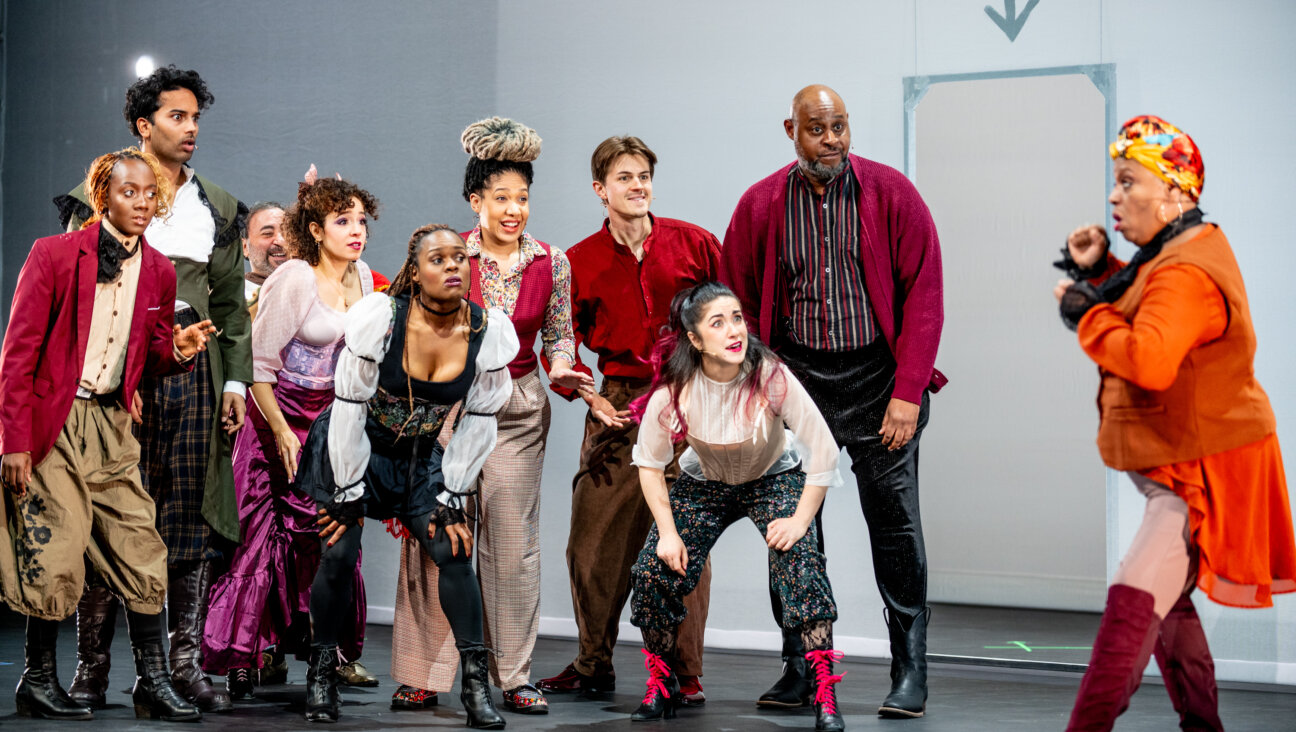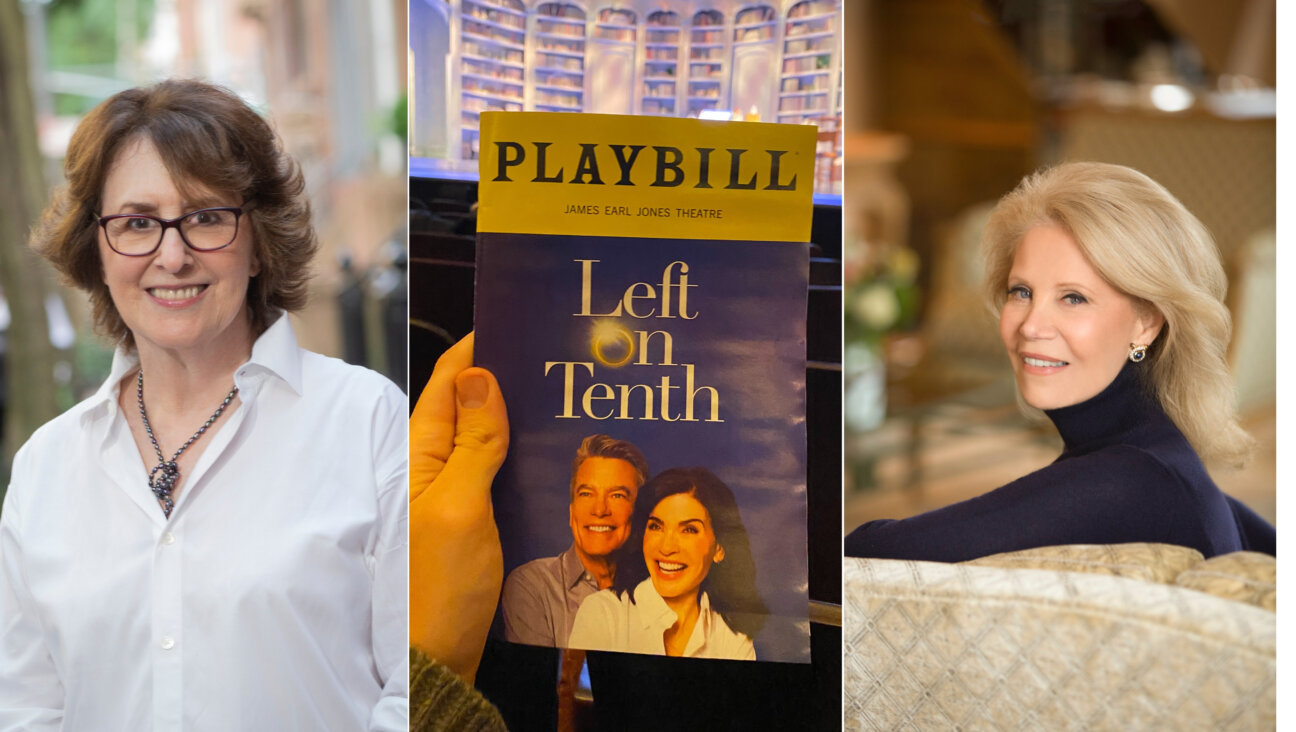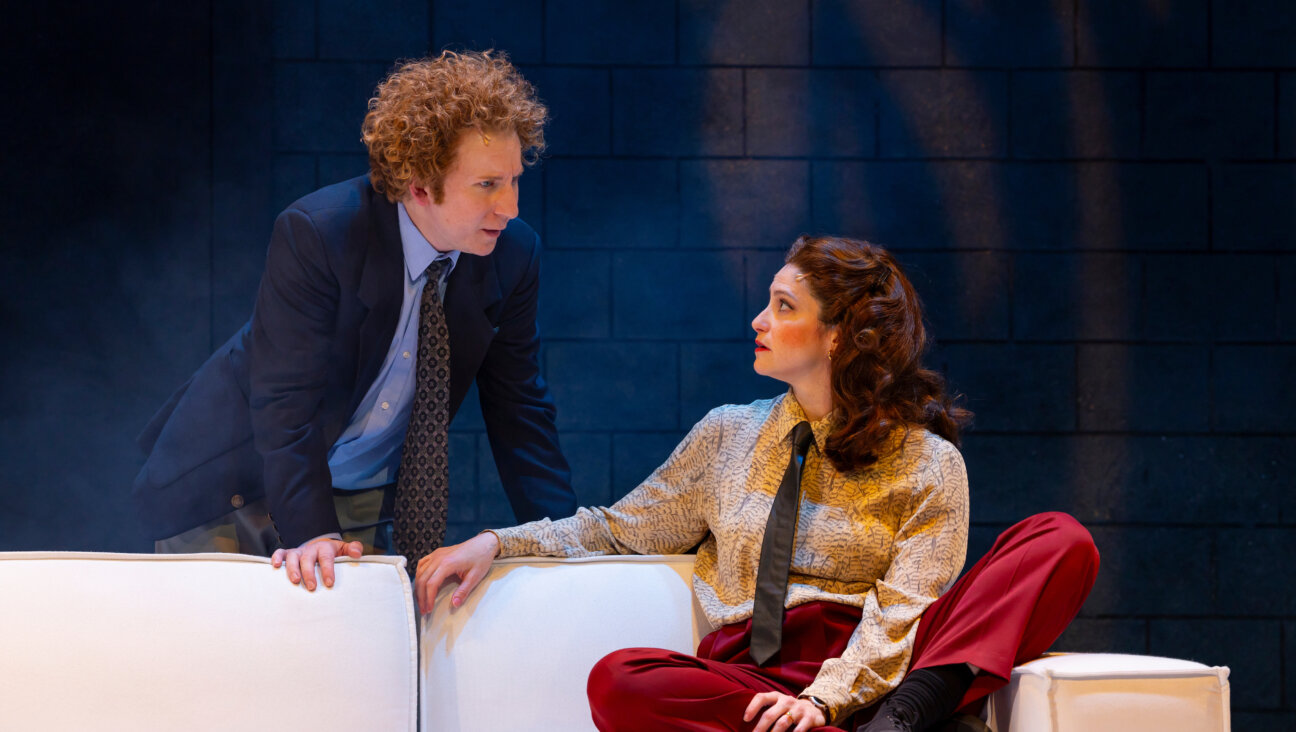‘Harry Potter And The Cursed Child’ Is Jewish — And Dark

Harry Potter and the Cursed Child Image by Matthew Murphy
The amazing, bar-raising production of “Harry Potter and the Cursed Child” is unlike anything I’ve seen on Broadway. The $63 million budget, the total renovation of the Lyric Theater into a theme-park-like immersive Potterworld experience, the staging, the two-part/five-hour length (for a mass-market play) – watching it felt like seeing the opening of “Cats” or “The Lion King” and knowing that, for better or for worse, Broadway would never be the same.
But here’s the thing: Underneath all of the whimsy, cuteness, and nostalgia, this play is dark AF.
It’s about trauma, inherited trauma, and repressed trauma. It’s about how children grow up to be parents who repeat the mistakes of their parents. It’s about living in the shadow of catastrophe.
Does any of this sound familiar? Before watching the play (I deliberately hadn’t read the script, which was published a few years ago), my editor and I were joking about whether there would be a Jewish angle to it. Turns out the whole play feels like a post-Holocaust meditation on survivor’s guilt, pain and intergenerational trauma.
Because the play has so many surprising plot twists, and because its publicists have practically begged reviewers not to reveal any of them, I’ll keep this review vague, albeit not entirely spoiler-free. Suffice to say, “Cursed Child” takes place 22 years after the end of the original Harry Potter series. Harry is all grown up now, and he and his wife Ginny (nee Weasley — but that is hardly a spoiler) have three kids of their own.
Two are fine (so fine that they barely exist in the play at all) but one isn’t: the middle child, Albus Severus Potter, struggles with the expectations of being Harry Potter’s Son — one named after two Hogwarts headmasters, no less. Those are big shoes to fill, and Albus doesn’t fill them. He’s not a star wizard, he seethes with rage at his celebrity father, and he propels much of the action out of a vengeful plot against him.
Is Albus the “cursed child” of the play’s title, then?
Well, not so fast. In fact, all of the children who have psychological depth also have serious daddy issues. Albus’s sole friend at Hogwarts is, in an unlikely twist, Scorpius Malfoy, the nerdy son of Harry’s arch-nemesis, Draco Malfoy. Scorpius, too, has impossible expectations to fulfill; he ought to be strong and fierce and mean, but is actually kind of a softie.
Indeed, for fans of Harry/Draco “slash fiction” (which revolves around romantic and sexual liaisons between the two enemies), the fervent love scenes between Albus and Scorpius offer a kind of fulfillment. Don’t worry, they’re straight; they’re just outsiders with secrets who fail at masculine pursuits but engage in a heated bromance with one another.
Along the way, Scorpius and Albus meet an even more potentially-cursed child, but I won’t say more about that right now.
Nor do their parents fare any better. Harry is unable to express love for his son — at one point, Ginny scolds him saying that while Harry would sacrifice himself to save anybody, he seems unable to love his son specifically. Instead, he, too, seethes with rage at Albus’s teenage rebellion, blaming him for not enjoying Hogwarts, where he is bullied and teased by other students.
Draco, meanwhile, has morphed in “Cursed Child” from vicious would-be murderer to wounded widower, raising Scorpius alone after the death of his wife and, a bit implausibly, joining the main characters of the series in their new adventures. “It is very lonely being Draco Malfoy,” he tells Harry.
These men are wounded: physically, emotionally, even spiritually. Harry is plagued by nightmares in which he relives the traumatic moments of his past, and is wracked with survivor’s guilt over the people who died back in the war. He says at one point “So many people had to die for the Boy Who Lived.” Draco is forever tainted by his family’s association with the evil Voldemort. Ron, incidentally, is fine; the best way to be happy in J.K. Rowling’s world is to be oblivious.
The central device of the play is time travel, which allows for both utterly delightful indulgences in nostalgia and the characters’ desperate attempts to turn back the clock, undo the past, unmake the mistakes that were made. Needless to say, these all go horribly wrong, leading not only to the familiar oops-we-destroyed-the-world paradoxes of time travel but also to the lead characters revisiting and re-experiencing their own pain. Even Ginny is tormented by memories of her close encounter with Voldemort, which took place back in the second Potter book.
That’s the thing about the Harry Potter series: Beneath the magic wands and fantastic beasts, it was always dark. Harry is abused by his aunt and uncle for nine years, sleeping in a closet and emotionally abandoned. Countless Hogwarts students are tortured, and several are killed. And throughout the series, Harry, Ron, and Hermione experience what it’s like to be hated by everybody — first everybody at Hogwarts, then everybody in the entire wizarding world. Yes, the series ultimately has a happy ending, but at what cost?
That, impressively, is what “Cursed Child” explores. No one emerges from a bloodbath unscathed. No one whose parents are murdered has an easy time of parenting. No one whose father is a hero has an easy time of growing up.
Now, I don’t mean to suggest that “Cursed Child” is an Ingmar Bergman movie. It’s also a hell of a spectacle, filled with action, humor, and adventure. The magic of the wizarding world is conveyed by a truly amazing combination of choreography, set design, and old-fashioned magic tricks and misdirection. Beyond the core five, other characters from the books and movies appear and make grand entrances. Practically every scene has an Easter Egg for a fan to appreciate.
And, unsurprisingly given the cost and rarity of tickets, the theater was packed with fans, young and old, when I saw the play. Standing ovations for beloved characters, audible tears and gasps, total silence at dramatic moments — this was a communal experience. After all, many of Harry Potter’s fans grew up along with him (I am six years older – close enough) and are now his age, bringing their own Albuses and Severuses to the theater. The fact that the play works for both audiences, as both children’s blockbuster and adult’s reflection on lost youth, is a feat.
Not everything is perfect. The play is far too long and meandering; It seems to end at least twice, only to cook up a new plot out of the embers of the old one. The dancing interludes are often hokey, the music often cheesy. And the plot holes — don’t get me started. Ultimately, I had to remind myself that adults are the secondary audience for Harry Potter, not the primary one. You have to relax and enjoy the ride for what it is.
But there were many, many times when I gaped in amazement, choked up, laughed, cheered, and felt the warmth of old friends I thought I’d never see again. I suspect many critics will focus on the blockbuster aspects of this production: the gift shop, the custom décor (this play isn’t going anywhere anytime soon), Harry Potter the franchise.
For me, however, it reminded me what I loved about Harry Potter in the first place: Rowling’s courage in depicting wounded, complex characters trying to figure out an often-hostile world. In that regard, she’s upped the ante with “Cursed Child.” It’s a spectacle, but it’s also a courageous work of art.
Jay Michaelson is a contributing editor of the Forward.
A message from our Publisher & CEO Rachel Fishman Feddersen

I hope you appreciated this article. Before you go, I’d like to ask you to please support the Forward’s award-winning, nonprofit journalism so that we can be prepared for whatever news 2025 brings.
At a time when other newsrooms are closing or cutting back, the Forward has removed its paywall and invested additional resources to report on the ground from Israel and around the U.S. on the impact of the war, rising antisemitism and polarized discourse.
Readers like you make it all possible. Support our work by becoming a Forward Member and connect with our journalism and your community.
— Rachel Fishman Feddersen, Publisher and CEO
























